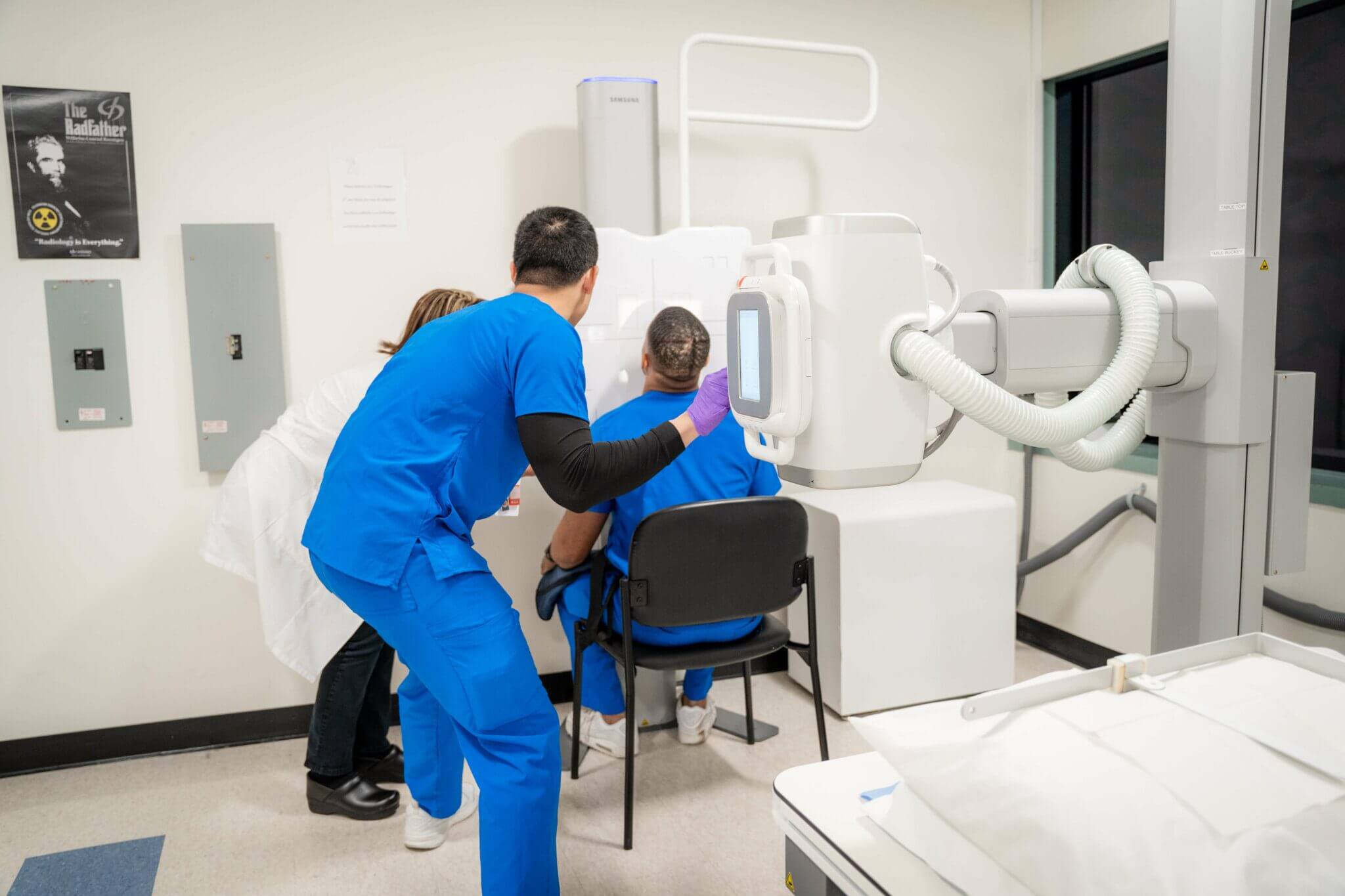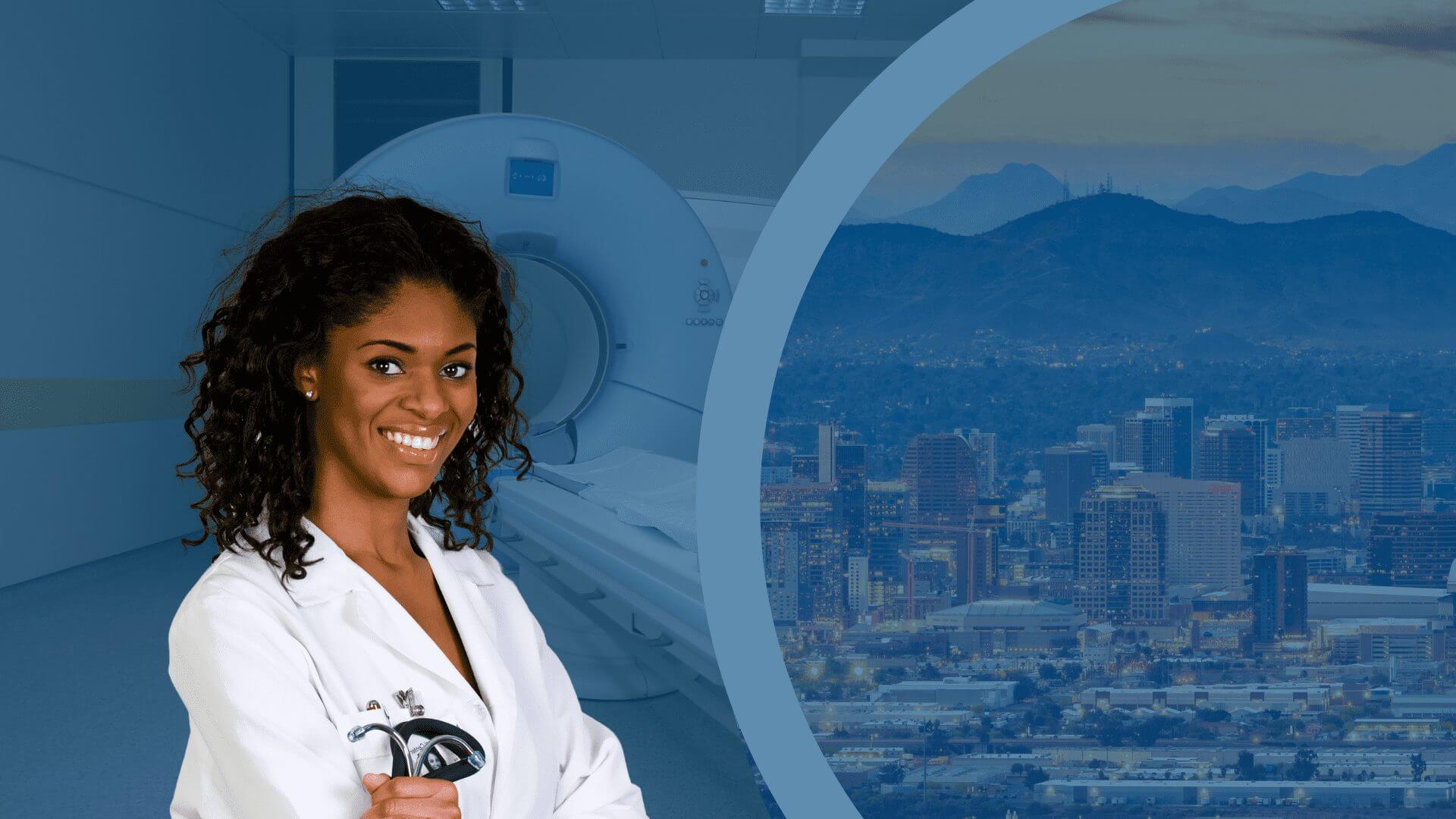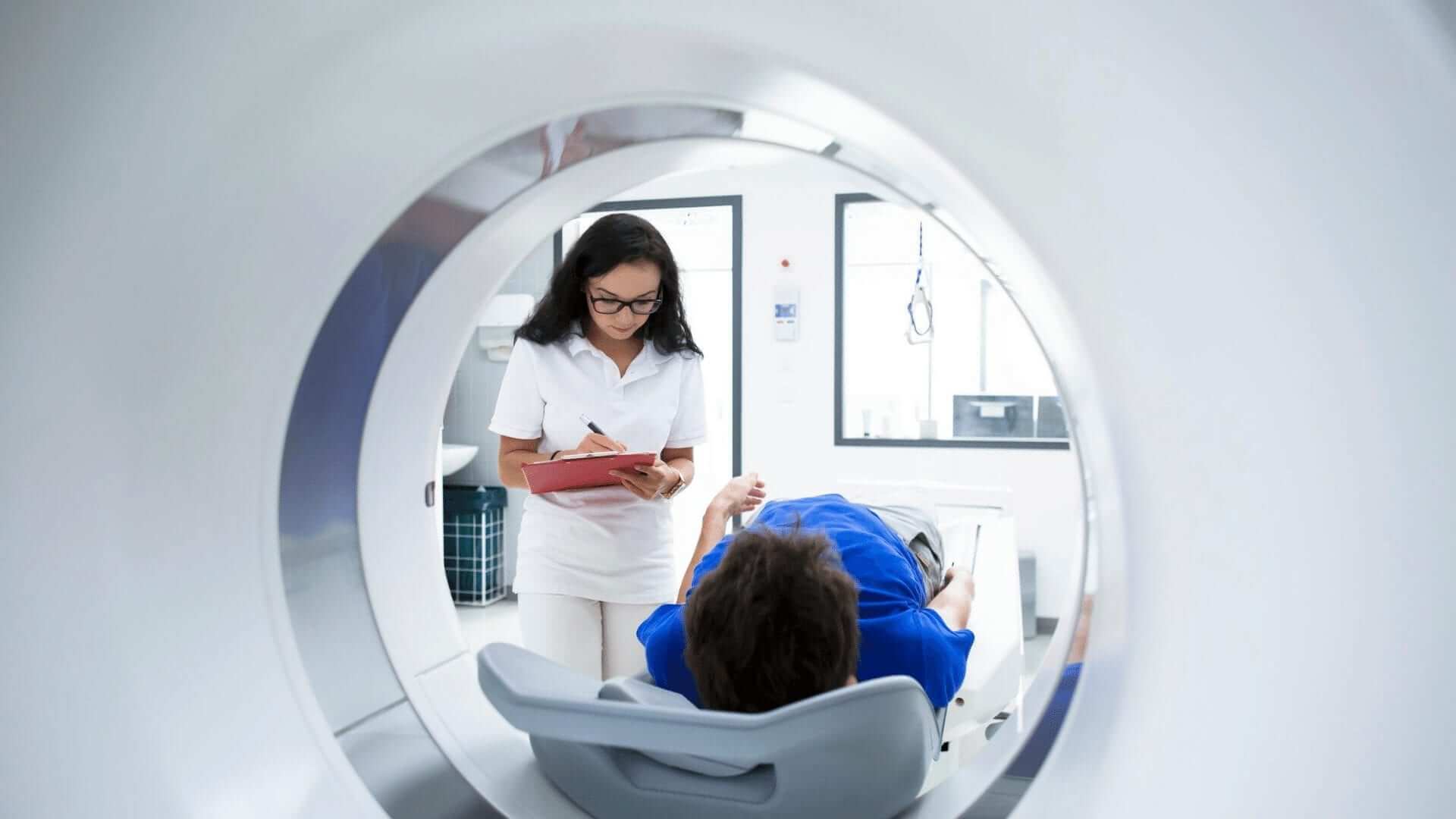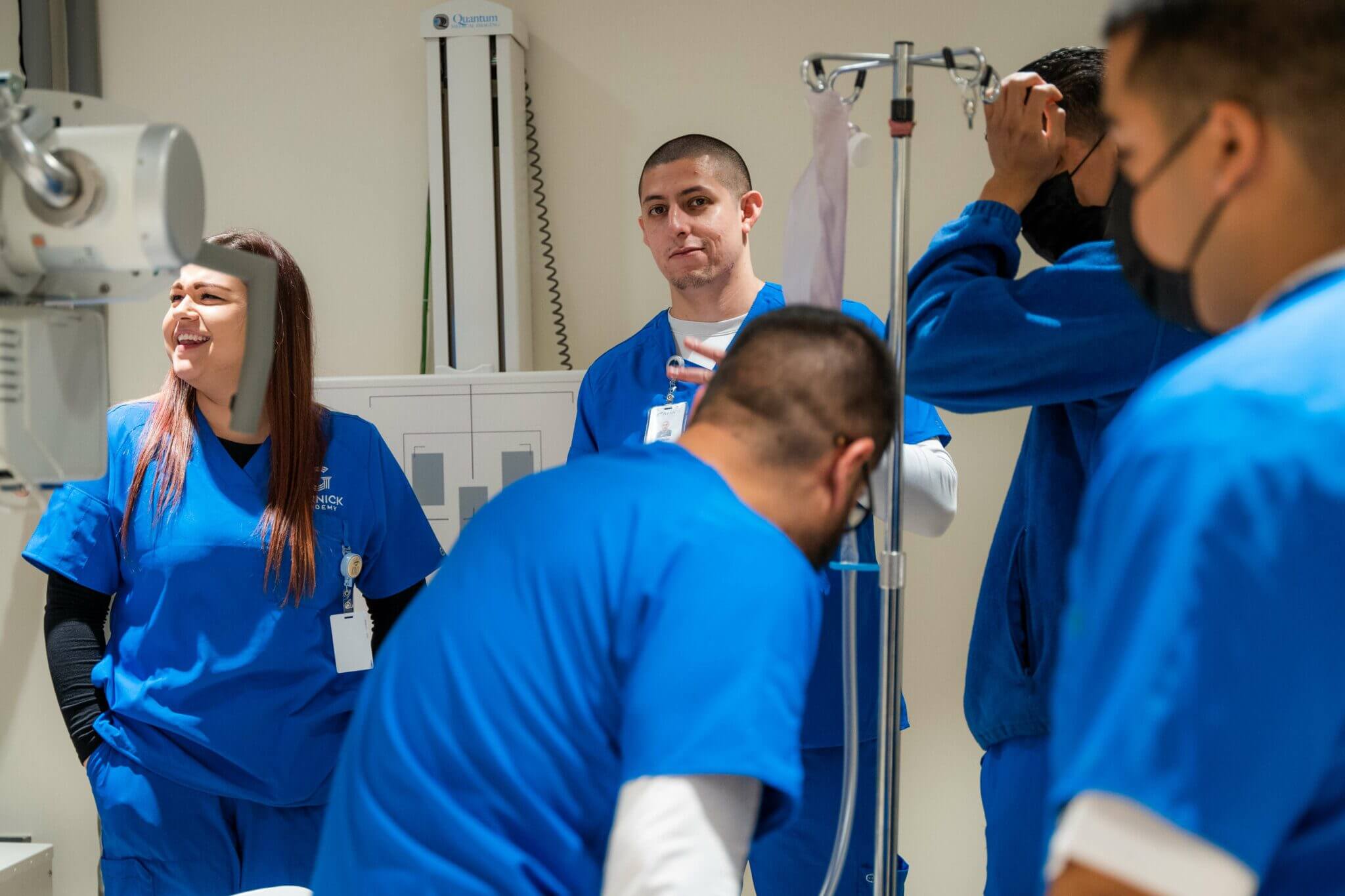Radiologic Training Might Be Perfect For You
Date: August 23, 2022
Radiologic Training might be a fit for you, especially if you’re interested in healthcare, serving others, and making a real contribution. Overall, academic radiologic programs train students to work in imaging. This includes working with patients, implementing X-ray procedures, and aiding physicians with tests. All of this is in an attempt to utilize imaging to diagnose illnesses and injuries properly.
By and large, academic levels for Radiologic Training include certificate, associate, bachelor, and master’s programs. However, many technology professionals also opt to diversify and specialize in scanning modalities.1
General Academic Offerings Unpacked
Diploma or Primary Pathway Certificate
With a diploma or primary pathway certificate program, X-ray Technicians hold limited entry-level permits. This allows them to conduct basic radiologic technology procedures. Whereby a certificate program is a short program designed to teach the basic application of X-rays to specific areas of the human body.2 In short it is training for a limited range of body parts.3
In many states, X-ray Technicians have minimum education, while some learn on the job. Note, Limited Scope X-ray Technicians differ from Radiologic Technologists.*
Associate’s Degree
On average, an associate-level radiologic technology program takes two (2) years. These Technologists are trained as certified Radiologic Technologists and are skilled in a full range of radiographic procedures. Generally, they may specialize in three major areas:
- Mammography;
- Computed Tomography Technology;
- Magnetic Resonance Technology.3
Bachelor’s Degree
In addition to required radiography and health-science courses, a bachelor’s degree also provides general education courses. Generally, this makes for a more well-rounded education. Whereby a four-year program offers coursework in specialty tracks. Moreover, these include higher levels of coursework in radiologic technology, leadership, and communication. According to nurse.org, “A Bachelor’s degree can make it easier to move into management and administrative roles.”4
Certificate or Postprimary Pathway
After earning an associate’s, bachelor’s, or higher degree in a primary area, Radiologic Technologists may add specialties to their core practices. They do this by completing one or more certificate programs. Generally, a postprimary pathway can be attractive to a working medical professional wanting to add additional skills to their vocation. Most often, the postprimary pathway is for people already working in this or a similar field.
Imaging Categories with Corresponding Academic Levels
By definition, diagnostic medical imaging encompasses several categories, including:
a) Ionizing Radiation (X-ray);
b) Sound or Radio Waves;
c) Radioactive Substances to Produce Images;
d) Magnetic Imaging.5
Here is a link for the medical imaging courses offered at Gurnick Academy, and below are their corresponding academic pairings:
Diploma
a) Ionizing Radiation (X-ray);
X-ray Technician with Medical Assistant Skills.
Associate’s Degree
a) Ionizing Radiation (X-ray);
Associate of Science in Radiologic Technology;
Associate of Occupational Science in Radiologic Technology
b) Sound or Radio Waves
Associate of Occupational Science in Ultrasound Technology (UT);
Associate of Science in Magnetic Resonance Imaging (MRI).
c) Radioactive Substances to Produce an Image;
Associate of Science in Nuclear Medicine Technology.
d) Magnetic Imaging;
A.S. in Magnetic Resonance Imaging (MRI).
Bachelor’s Degree
Bachelor of Science in Diagnostic Medical Imaging (BSDMI) (Gurnick Academy’s BSDMI program includes six specialty tracks, listed below.)
- Track One: Imaging Informatics–Digital Radiography and PACS, Communication and Education in Imaging Informatics, Systems Management in Informatics.
- Track Two: Leadership and Management–Leadership and Performance, Operations and Human Resource Management in Diagnostic Imaging, Financial and Asset Management in Radiology.
- Track Three: Education–Teaching Strategies for Adult Learners in Health Science, Curriculum Design in Diagnostic Imaging Sciences, Methods of Teaching Online Courses.
- Track Four: Mammography–Ionizing Radiation (X-ray)–Principles of Mammography, Advanced Applications of Breast Imaging, Mammography Registry Review.6
- Track Five: Computed Tomography (CT)–Ionizing Radiation (X-ray)–Principles of Computed Tomography, Advanced Applications in Computed Tomography, CT Registry Review.7
- Track Six: Magnetic Resonance Imaging–(Magnetic Resonance)–Physical Principles of MRI, Advanced Principles of MRI, MRI Safety and Registry Review.8
What Type of Imaging Professional Are You?
As may be evident, there are as many types of Radiologic Technology options as there are personalities. Whether you want to pair technology and healthcare as an X-ray Technician with Medical Assistant Skills or a professional wanting to augment your current role with postprimary certification, there is a course for you. Or perhaps you wish to take an Associate level Radiologic Technology course and begin your career, rest assured it’s available.
Regardless of your specific interests, we have a spot waiting for you. If you want to “court” a management position and can’t get a degree fast enough, we likely have your class in our lineup too. Contact us today.~
*Within the industry, there is a distinction between the two titles. Technician and Technologist are not interchangeable terms.
Citations:
1 “29-2034.00–Radiologic Technologists and Technicians.” O*NET OnLine, National Center for O*NET Development. (Accessed May 20, 2022.)
2 “License Information for X-Ray, Limited Permit Technician (LP).” Employment Development Department (EDD), State of California. CA.Gov. (Accessed Aug. 9, 2022.)
3 ^a, b Employment Development Department (EDD) State of California. CA.Gov. (Accessed Aug. 9, 2022.)
4 “How to Become a Radiology Technician.” Nurse.org, Full Beaker, Inc., 2022. (Accessed Aug. 12, 2022.)
5 “Radiologic Technology.” Gale Encyclopedia of Nursing and Allied Health. Encyclopedia.com. (Accessed Aug. 9, 2022.)
6 “Mammography.” National Institute of Biomedical Imaging and Bioengineering, U.S. Department of Health and Human Services. (Accessed Aug. 12, 2022.)
7 “Tomography.” National Institute of Biomedical Imaging and Bioengineering, U.S. Department of Health and Human Services. (Accessed Aug. 12, 2022.)
8 “Magnetic Resonance Imaging” National Institute of Biomedical Imaging and Bioengineering, U.S. Department of Health and Human Services. (Accessed Aug. 12, 2022.)







